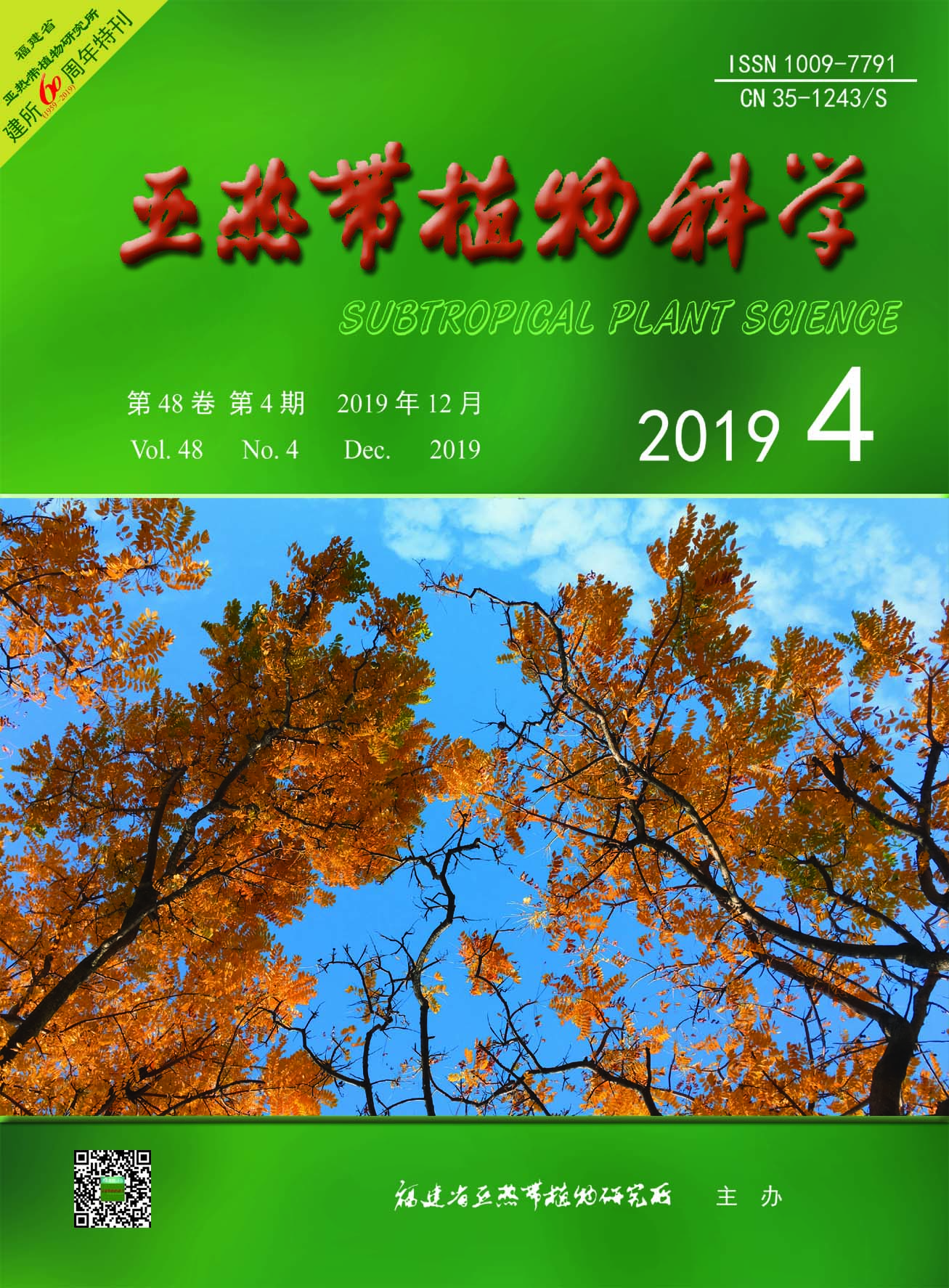|
|
ISSR Analysis of Genetic Diversity of Hovenia acerba from Fujian
HUANG Wen, LI A-chi, HU Ying-ping, YANG Zhi-jian, MING Yan-lin, CHEN Hui
2019, 48(04):
314-320.
DOI: 10.3969/j.issn.1009-7791.2019.04.002
In this study, ISSR molecular marker techniques were used to study genetic diversity and the genetic relationship of 35 Hovenia acerba germplasms from 12 provenances in Fujian. The reaction system of ISSR for analyzing the genetic diversity of H. acerba was established and optimized. The best one was shown as follows: total reaction volume 25 μL, 10×Ex Taq Buffer (Mg2+ plus) 2.5 μL, dNTP Mixture 375 μmol·L-1, primer 0.4 μmol·L-1, DNA template 75 ng, Ex Taq enzyme 1 U, ddH2O 14.55 μL. Procedures: pre-denaturation at 94 ℃ for 5 min, denaturation at 94 ℃ for 30 s, annealing at 50 ℃ for 1 min, extension to 72 ℃ for 90 s, a total of 35 cycles, final extension to 72 ℃ for 7 min. Finally, 175 locus of genomic DNA in total were detected from 10 ISSR primers and 155 were polymorphic locus, which covered 88.57%. The number of alleles(Na) was 1.8857 and the effective number of alleles(Ne) was 1.4300. Also, Nei’s gene diversity(H) was 0.2572 and Shannon’s information index(I) was 0.3959. UPGMA cluster analysis showed that according to the similarity coefficient of 0.74, the 35 copies of H. acerba germplasms could be classified into 4 groups. ISSR molecular marker techniques could well reveal genetic differences and the genetic diversity among H. acerba. The measured materials from 12 provenances of H. acerba showed abundant genetic diversity, which had great potential for exploitation and utilization.
References |
Related Articles |
Metrics
|
